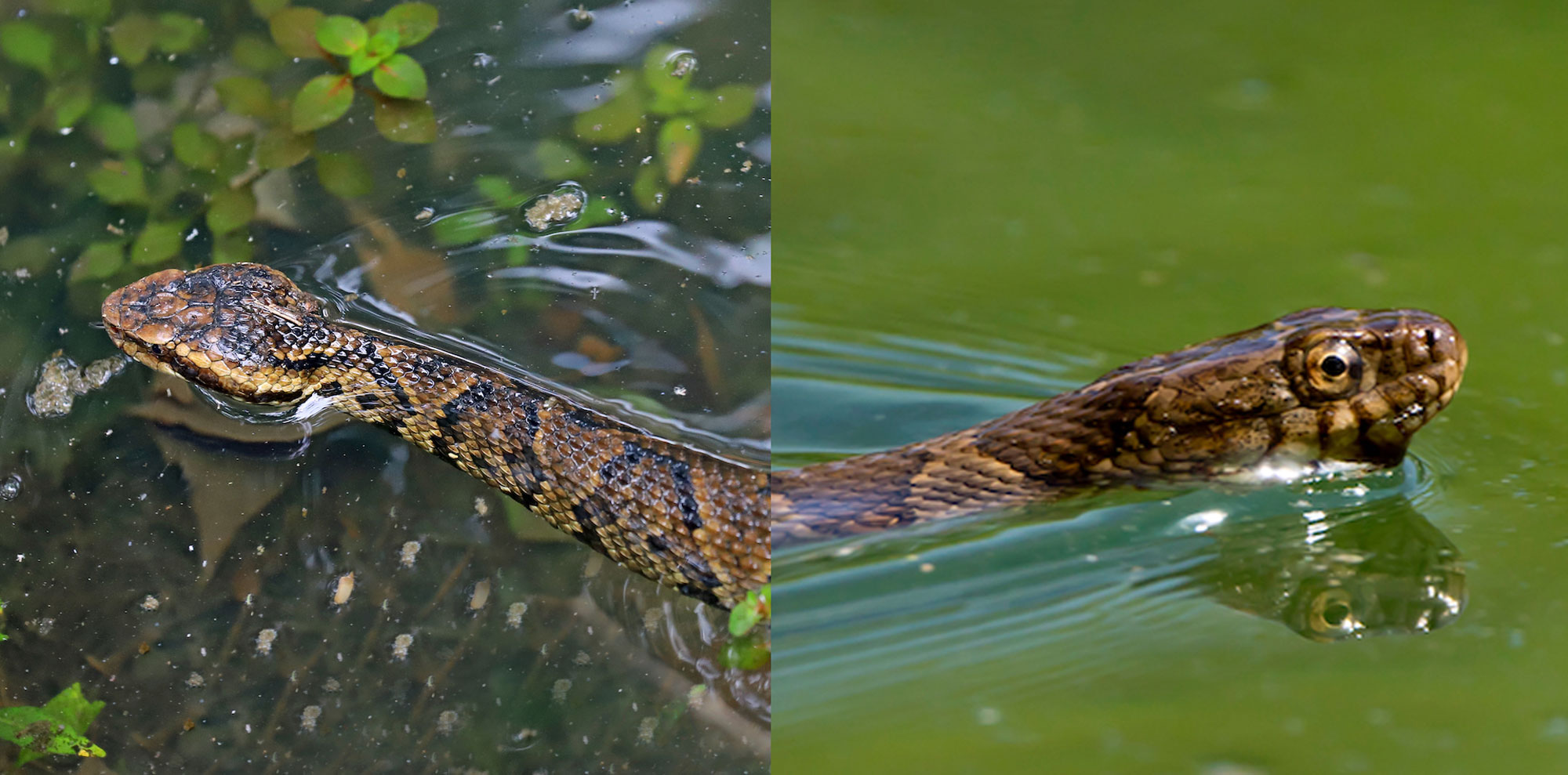What's the difference?: Northern water snake vs. cottonmouth

We've said it before and we'll say it again: There are no venomous snakes in Will County. Still, though, that doesn't stop people from thinking every snake they see in the water is a harmful cottonmouth rather than a harmless northern water snake.
Some of the confusion between these two snakes is understandable. That's because cottonmouths are also called water moccasins, and many people use the term "water moccasin" to refer to all water snakes without differentiating between species, according to Wildlife Illinois. Only one of the seven water snakes that live in Illinois is venomous, the cottonmouth. All others are non-venomous and pose no risks to humans.
Here in Will County and elsewhere in northern Illinois you can rest assured that any snake you see in the water isn't venomous. That's because cottonmouths only inhabit the far southern portion of Illinois, no farther north than Carbondale, Wildlife Illinois reports.
Both cottonmouths and northern water snakes, also called common water snakes, have dark bodies, and they are typically banded. Both also have keeled scales, which means they are ridged rather than smooth.
But besides geography, there are a few physical clues to help tell the difference between these two snakes. First, cottonmouths have thicker, heavier bodies than northern water snakes, which are long and thin, according to the University of Florida Department of Wildlife Ecology & Conservation. Cottonmouths also usually have a neck that is narrower than their heads, while water snakes have necks that are not distinct from their bodies.
Head shape can also be a telling clue. While cottonmouths have thick, block-shaped heads, a water snake's head is flat or slender, the University of Florida reports. Cottonmouths will also have an eye stripe on their heads, while northern water snakes do not always have this stripe.
All the venomous snakes in Illinois, including cottonmouths, are pit vipers, a classification that means they can be identified by pits, or large openings, between their eyes and their nostrils on each side of their heads, according to the Illinois Department of Natural Resources. Non-venomous snakes in Illinois do not have these openings, which are used to detect body heat from their warm-blooded prey. Pit vipers also have eye pupils that are elliptical in shape rather than rounded like in other snakes.
Three other venomous snakes live in Illinois: the copperhead, the massasauga and the timber rattlesnake. Like the cottonmouth, none of these snakes are found in Will County. The copperhead lives only in the southern two-thirds of Illinois, Wildlife Illinois reports. The massasauga is state endangered and today is only known to live in one Illinois county — Clinton County. The timber rattlesnake is state threatened and only lives in the southern third of the state and along the Mississippi River.
